A biography of KOM, as he was sometimes called. A Canadian, a Kansan, a Quebecker, a New Yorker, depending on which lie he was telling at the time. O’Malley (1854-1953) spent 65 years in Australia in Hobart, Launceston, Melbourne, Perth, Sydney, and Adelaide. Often one step ahead of bailiffs. Indeed taking ship to Australia in the first place may well have been to evade creditors when he was about 25 years old.
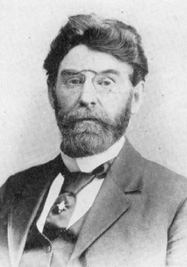 The man himself, King O’Malley
The man himself, King O’Malley
To establish himself with audiences here and there he claimed a variety of backgrounds and motivations, uninhibited by what he had said previously elsewhere to other audiences, and there was no social media to trip him up. So convincing a liar was he that he convinced himself, repeatedly. And audiences he had to have. He was a man who craved attention, and found it to in sound of his own voice. He looked and sounded American to his contemporaries in Australia, but he claimed Canadian birth to qualify for citizenship and a run at parliament, first in South Australia, and then in Canberra.
He started out selling insurance but discovered, as have others like Huey Long, that the product he could best sell was himself.
Loud, brazen, boastful, egotistical, obnoxious, he was just like all Americans in the Australian stereotype today. So thought many then but more fool them because voters elected him. His political career started in South Australia, borne, said his foes, on the votes of women who found him a handsome and dynamic man. So much for Enlightenment Adelaide. Having sold insurance most of his life made him — in his own mind — a financial expert, that plus the United States had a national bank were enough to convince him of the need for national bank in Australia. It was a theme he played throughout his political career and in the end he was one of the driving forces in creating the both the Commonwealth Bank and also the Reserve Bank of Australia. There were many objections to both.
Physics is so simple, as Isaac Newton said, for every action there is an equal and opposite reaction. In politics for every action there is a myriad of diverse reactions that roll on and feed on themselves. Together they far exceed the original action, and they go off in so many directions that they cannot be tracked.
While he advocated many causes on the nascent Labour agenda at the end of the 19th Century, he was reluctant to join that party and accept the discipline that went with it. Round the turn of the 20th Century the party system did not have a deadlock on seats, and there were a number of independents. Nonetheless, he supposed he would get a cabinet seat. Someone had to tell him to join that club he had to join the party club and he became a Labor man. His constituency was Darwin in Northwest Tasmania though he lived in Melbourne in the main.
He was minister for home affairs in two governments where he seems to have made a point of clashing with the officials in the Department. Accordingly there was a great deal of smoke and lightning, but the snail’s pace continued.
Because he was a rootless bounder, he had traveled far and wide in Australia selling insurance for years before entering politics. Consequently he had seen more of the country most of his colleagues and that led him to advocate a national railroad. Another theme he stayed with for years.
Perhaps his most lasting mark on Australian was to support Walter and Marion Griffin’s design for Canberra, and to stand by that design and the Griffins when the political football game began. There were many ups and downs but they remained friends so that in his 60s and out of politics when O’Malley paid his only return visit to the United States he stayed several weeks with Walter’s parents in Elmhurst near Chicago.
 O’Malley at the ceremony inaugurating the site of Canberra
O’Malley at the ceremony inaugurating the site of Canberra
As O’Malley aged he matured. Many of the passages quoted from Hansard on the bank, the railroad, or Canberra as far less bombastic and more reasoned than his comments on the same subjects twenty years earlier.
By the way, he was a teetotaller all his life, though he freely bought drinks for others, clients and voters. Yet there is pub in Civic in downtown Canberra that bears his name on the stereotype that all Irish are sots. When travelling he never stayed at a licensed hotel such was his aversion to drink and drinkers.
 The pub in Civic
The pub in Civic
He was personally frugal to a fault with his own money and that of the Commonwealth. Religion is not mentioned. King was his mother’s maiden name. He spent about twenty-five years in retirement burnishing his reputation. He married Amy in his 40s and they stayed married, though our author speculates that King was not a romantic. Having bought property whenever he could along the way, he was a wealthy man and he arranged for his estate to support scholarships for girls only. In the 1960s a Canberra suburban was named after him.
This short book is judicious and droll. It should be of interest to anyone who has wondered about Canberra came to be as it is. It faithfully recounts O’Malley’s words and deeds and then slowly applies a great deal of salt to arrive at conclusions. It is far more circumspect than the credulous entry in Wikipedia. Likewise the entry in the ‘Australian National Dictionary’ of biography is very cautious.
Author: Michael W Jackson
‘The Crag’ by Wendy Spathopoulos (2007).
The ‘Crag’ is Castlecrag on Middle Harbour, Sydney, a jewel hidden in plain sight on a peninsula, there are no through roads and so no passing traffic. Thus it is not known to many locals, despite its rich, even unique, history.
It has two distinctions. First, it is one of the last places in metropolitan Sydney that Aboriginals lived in their traditional way into the 1920s. There is photograph evidence of that in the Mitchell Library archives on Macquarie Street. Second, it was home to Walter Burly Griffin and Marion Mahoney Griffin, who created Canberra, the national capital, for more than a decade. This latter is the focus of the book under review.
The location, planning, and building of Canberra was a very large and lucrative political football, which was kicked and pulled in all directions. The main point relevant here is that there was an international design competition to plan Canberra, and the entry chosen by the selection committee had been submitted by Walter Burley Griffin of Chicago who worked with Frank Lloyd Wright, as did Griffin’s wife Marion. Walter and Marion migrated to Australia to contribute to the building of Canberra, setting up headquarters in Melbourne in Chinatown.
In short order a kick of the political football tossed Walter and Marion off the project, though the overall conception remained theirs, as did the eponymous lake when it was finally built (does one built a lake?) in 1961, fifty years later.
They had established an architectural practice in Melbourne and occasionally visited Sydney to meet clients. At some point they saw the wilds of Castlecrag and decided to move there. They set up a business to develop the Crag in accordance with their own planning and architectural principles, designing and building houses, parks, an amphitheatre, an incinerator, and a hospital.
In 1926 when Canberra was declared open for business in a grand ceremony, the Griffins were not invited. That will sound familiar to many who have toiled in large organisations with neither corporate memory nor simple courtesy but replete with strategic plans and a branding campaign…..
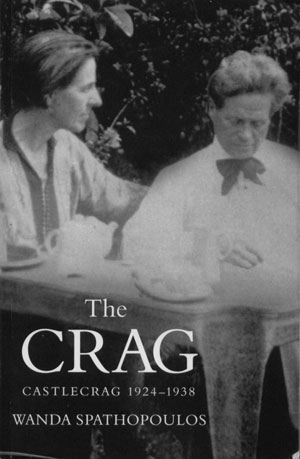
Wendy Spathopoulos summarizes the story above, but concentrates on the Crag years, which she witnessed as a child. She writes very well, strikes a balanced tone, and offers the results of library research, archival burrowing, interviews, and personal recollections. It is a mixture, to be sure, but she pulls it together well. Stories of colourful characters, and none were more colourful than Marion Mahoney, are mixed with the dreary struggle to get planning approval to build a house with the kitchen at the front near the street, and not at the back. Yes, Ripley, the Willoughby Council fought this to the end. Kitchens have always gone in that back and in the back they should remain. However, there was no legal grounds for this imperative and in the end, the Griffins prevailed.
By the way, they put the kitchen at the front so that deliveries from the street could be done easily; think of those times you have carried groceries through the house to the kitchen, and the point is made. In addition, putting the kitchen at the front meant the wife, inevitably at the time, had ready access to the street for child minding, for seeing neighbours, for reducing the social isolation of the wife at home.

The Griffins’ principles of design emphasised integration into the natural environment, per Lloyd Wight, and maximum functionality of space, including the roofs, which were flat for use in drying clothes, and as a patio. This also threw the Willoughby Council into hysterics, to judge by the minutes of meetings quoted in this book. Flat roofs were … unheard of, safety risks, a health risk, the work of Satan. But again there was no legal basis for the reaction and with persistence it yielded, but it shows that nearly every step was uphill.
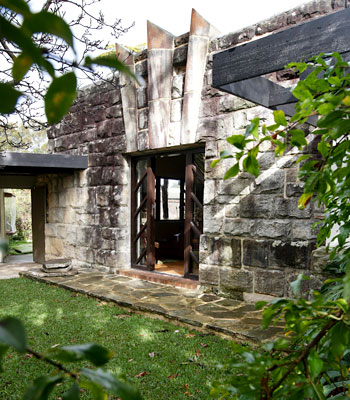
It was all uphill in another sense, too, because Castlecrag is a ridge line with steep slopes on both sides down to Middle Harbour, and that pushed up building costs, though it kept down land prices. But by following the contour of the land, the Griffins tried to keep the cost of road building down, but once again Willoughby Council objected. Roads had to be straight, even if nature was not. Take it as read that Willoughby Council objected at each and every step to each and every thing.
The houses were small so as to be affordable, two bedrooms, with small rooms to economise on heating and lighting costs, with many large widows and serving ports to ease the work of the wife in the kitchen and walk through fireplaces that could heat two rooms. Yes, the Council objected to most of these design elements as well.

Marion Mahoney was larger than life and a dedicated amateur thespian. Hence the amphitheatre for the neighbourhood productions she orchestrated. She involved the local children in preparing the sets, props, costumes, and performing in some of the works where suitable. She and Walter knew many artists from Melbourne, some from Chicago and met more in Sydney. The players were amateurs but the productions were not amateurish. Marion designed and built the sets, as well as the costumes and props. The plays she produced included:
A Midsummer night’s dream – Shakespeare
Iphigenia in Tauris – Euripides
Prometheus bound – Aeschylus
The Green snake – Goethe
Oedipus Coloneus – Sophocles
In keeping with their commitment to the integrity of the environment, the Griffins spent a lot of time on storm water re-use — yup, another bone of contention, sanitation, and sewage. He designed his own sewer pipes because he found the Council standard inadequate. Guess what?
Spathopoulos describes both the Griffins as energetic, optimistic, and vital. The resistance of the Willoughby Council presented an opportunity to educate its members in design principles, building techniques, the value of social interaction, the integrity of nature, and so on. Thick skinned indeed these two paragons. However, banks were altogether harder since they did not hold public hearings. Banks? Yes, the banks were unwilling to lend money to buy such oddities as the houses the Griffins designed and built.
Walter also devised his own construction techniques and manufactured the building blocks to do it. Once again resistance was futile, if exhausting. He did not only design and plan, he also built and often pitched in on the manual labor. Marion was a keen gardner throughout the area, always native plants. Super-Greens avant le mot, they never uprooted a tree to build a house but planned the houses around the existing trees. Guess how the Council reacted to that.
Walter and Marion were keen connoisseurs of the many varieties of eucalyptus trees, and would have loved the novel ‘Eucalyptus’ (1999) by Murray Bail, I know I did; it is reviewed elsewhere on this blog. Walter taught the local children to identify the varieties of the gum tree with their Latin names.
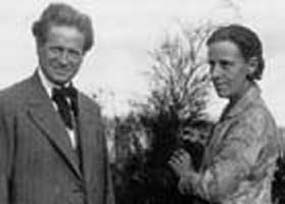
While artists, some university people, a doctor or two bought Griffins houses in Castlecrag, they were few, and then the Great Depression came. King O’Malley, that giant of Canberra politics, remained a lifelong supporter and friend, bought a house as an investment. So did two Chinese the Griffins had gotten to know in Melbourne. Miles Franklin, the writer, was a frequent visitor but could not generate the finance to buy, and no bank would lend to a woman in those days. (Indeed about every 15 years there is a review into banking in Australia that discovers it is still true that banks are very reluctant to lend to women.)
Despite some trials, the Griffins prospered in Castlecrag, ever active and creative. They were active in the Theosophical Society and later the Anthroposophical Society, both forms of occult spiritualism which were in vogue at the time. There were one or two trips back to the States. He went to India on a commission and found much work there, and Marion joined him for a time. He died there and she returned to Castlecrag for a while.
Utopian theory and practice led me to planned cities, and I tried for years to interest a student in a thesis on that subject. Brasilia, New Delhi, Washington, Canberra, they offer plenty of choice. Hence I have read about Canberra and Griffins and saw in them a dotted line back to William Morris and one thread in utopia.
I put a visit to Castlecrag on the To Do list, and one day its number came up. There is a guided tour offered by the local residents association, on which I commented in an earlier post, and off we went. At that time I came across this title, but found it was unavailable and not in the University library. I put it on my Amazon Wish List and one day I noticed it was available and acquired it. It runs to 400 pages and has many photographs included. Too bad it is not more widely and easily available.
The book is unpretentious, straightforward, and lets story speak for itself, but I found the author’s decision to intersperse chapters about a visit to Greece distracting without adding to story of Castlecrag.
Your tax dollars work, published with an Arts Council grant.
Frederick Lieb, ‘Connie Mack: Grand old man of baseball’ (1945)
I was looking for a biography of Mr. Mack (1862-1956) and this is as close as I could get and it is not a biography. Apart from a couple of early chapters about his playing career, it charts the seasons of the Philadelphia Athletics to 1945. It bursts with baseball clichés and brings back to mind some of the famous names, but there are no insights. Mack managed the Philadelphia Athletics from year zero 1901 to 1950, more than 7,000 games.
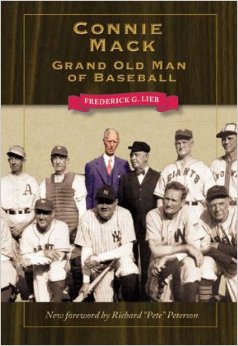
There is nothing about Mack’s ability to manage his teams, the more so as he aged and the players got richer. That was what I was looking for. I did learn why the name ‘Athletics’ and why the ‘White Elephant’ as a mascot. Members of the Philadelphia Athletic Club were the early investors at the turn of the Twentieth Century. It was a racket club. Skeptics said the franchise would be a white elephant, i.e., not succeed, and Mack and Shibe, the major shareholder, took that as the mascot image. They added the baseball either as a conscious reference to fickle fortune, as balancing on a ball symbolised in the Renaissance, or just because it was a baseball!
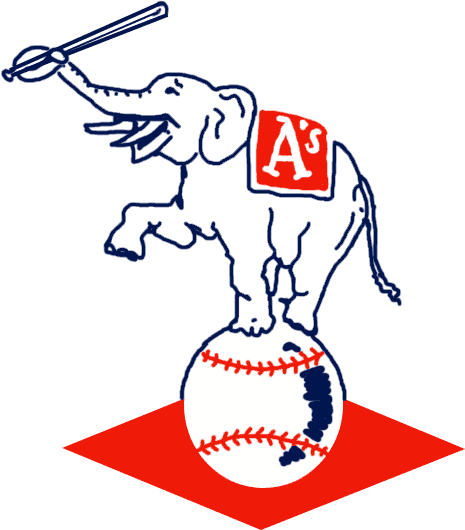
Mack played professional baseball from 1886 to 1896 and shifted into coaching and managing. He proved adept at managing some pretty wild and undisciplined characters, but how he learned to do this and how he did it, are not to be found in these pages. He also learned to treat management as a business, being himself part owner of the team.
In the unregulated era that covered most of his seasons, poaching players was common, rival teams would set up across the street to siphon off fans, journalists were unscrupulous, and many players found the money had to be spent on alcohol and women. Somehow this man who himself did not smoke, drink, or swear convinced most of his players to follow his example. Those he could not win over, he let go. By the way, that is the origin of the name Pirates for Pittsburgh, because it pirated players from other teams when it had steel money.
Shibe park was mostly .25 cent bleacher seats to allow its working class fans to attend, and the attendance gate was the only source of revenue then. Accordingly the Athletics could never compete with the New York and Chicago teams in money.
 Shibe Park, interior.
Shibe Park, interior.
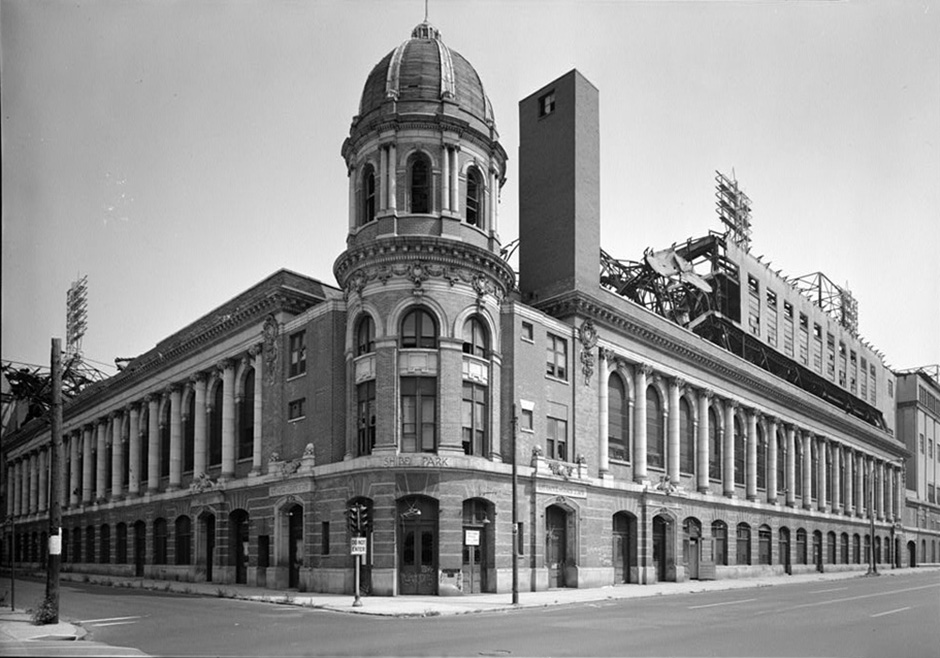 Shibe Park, Street view. Mack’s office was in the tower.
Shibe Park, Street view. Mack’s office was in the tower.
One of the distinctive feature of Mack was that he always wore a business suit when he managed. There he is on the dugout bench in a suit, tie, and hat with his players, scorecard in hand. Earlier in his career as a manager, before the A’s, he had dressed with the players and changed back into street clothes with them, as is still the norm in baseball. He stopped doing it because he found it hard to control himself, he told the author, sometimes after a stupid loss. He decided to stay out of the dressing room altogether, leaving the coaches to that realm, and establish some distance. Then when the wanted to talk to a player about that stupid loss, he would do so later that night in the hotel on the road, on the next day before the game, but in each case privately when cooler heads prevailed all around.
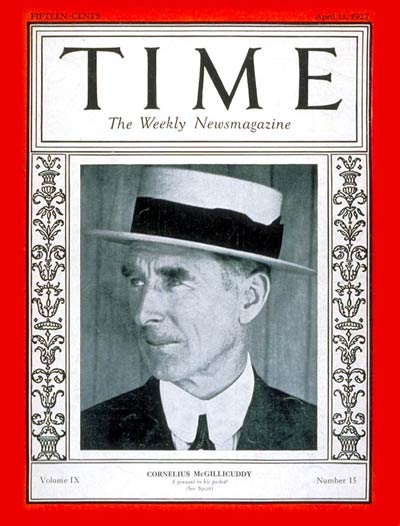 He became a national figure.
He became a national figure.
Of course the most impressive thing about Mack, and it comes through in this book, is abiding enthusiasm and interest in the game, its rules, its players, its symbolism, its continuity for more than fifty (50) years.
‘Elizabeth I Renaissance Prince’ (2014) by Lisa Hilton
The title caught my eye. The juxtaposition of ‘Renaissance’ and ‘prince’ had to mean Machiavelli, so it did. I thought to read it then, to find out how Machiavelli is maligned within and, after all, Elizabeth is another great leader per my presidential reading project. So off I went.

My head whirled at the time and place. What a world was the Tudor court. What a time in the continuing bloody conflict between staunch Catholic and zealous Protestant. This was not a polite doctrinal dispute but one that often ended, quickly, at the end of an axe or pyre for burning dissents alive as soon as possible.
In reading all of this I am reminded again that Henry VIII had very good political reasons for his six wives. Now it is true that the women he selected sometimes were chosen for sexual attraction, but he desperately needed an heir. And that heir would have a better chance of support and survival if it was a he and that he was a Protestant. That he had six wives was a measure of the desperation for an heir as much an anything else, contrary to the vulgarians on the idiot box who can think only of genitalia, telling us some much more about themselves than Henry.
I learned a few things, against the odds as explained below under vinegar. Elizabeth’s half-sister Mary Tudor, who ruled for five years as Mary I of England, is not Mary Stuart, Queen of Scots, though the confusion is invited because Mary Stuart, Queen of Scots, was styled Mary I of Scotland and since there were those who thought she ought to be on the English throne, she was sometimes thus referred to as Mary I of England, too. These two Marys were cousins of some remove. Mary Stuart, Queen of Scots, descended from Henry VII (father of Henry VIII). Henry VIII was father to both Mary Tudor with Katherine of Aragon and Elizabeth Tudor with Ann Boleyn. Mary was 15 years older than Elizabeth. Neither had anything like a normal childhood.
Elizabeth Tudor, as a child, survived the court intrigues in part because she was a girl and so not considered a threat by any of the court factions. Her younger brother, Edward was the presumptive heir and attention focussed on him. At one time or another, Henry VIII, while he still lived; Edward VI, the boy king; Lady Jane Grey, and Mary I either disinherited or denounced Elizabeth. By disinherited I mean excluded her from royal succession. Sometimes this exclusion was done though an act of parliament, and at other times by a decree. Then there would occur a shift in court politics, or a rumble in European affairs and restoring Elizabeth seemed politic.
Edward VI was the first king raised and educated into Protestantism as was Elizabeth, and the first monarch to come to the throne a Protestant. MaryTudor, the older sibling, was reared by her mother, the very pious Spaniard, Katherine, into Iberian Catholicism, that of the Inquisition. If there were variations in Catholicism, this was the take-no-prisoners version. The best way to save the soul of sinners is to kill them immediately to stop the sin, and make things easier for them in the afterlife. If that sounds wacko, read more about the Tea Party to find contemporary parallels.
The boy King Edward was never robust and on his deathbed at 15, he signed a paper passing the crown onto Lady Jane Grey, who had reared him and nursed him in his last days, his mother, Jane Seymour, had died in his birth. Whether Edward knew what he is doing or not when he signed, there were many who supposed the crown was not his to give, and Lady Jane Grey’s interregnum lasted 9 days. To save herself, though very Protestant, she professed allegiance to Mary. It did not save her.
Mary Tudor became Mary I for five years. She pulled off a diplomatic coup with a political marriage to Phillip of Spain, heir to the Castilian throne. Phillip spend a year in London where he counselled her to show moderation to Protestants. Though very much a Catholic himself, the point of the marriage was to secure a powerful English ally against the French. That would not work if the English turned against each other in a religious war. Being a seaman himself, he also introduced reforms into the Royal Navy in ship building and in promotions. Ironic, no? This is the same Phillip who dispatched the fabled Armanda against the Royal Navy he had helped create while Elizabeth, the women he shielded, was queen.
Matrimonial politics makes strange bed fellows, for while the conjugal alliance with Phillip of Spain corralled the French for a time, it was not popular with the English public, nor with the many nobles who preferred one of their own in that bed. Even English Catholics were less than enthusiastic for a Spanish king. Note, he was accorded the ceremonial title king, but the marriage contract specifically denied him any authority, but still there was that word ‘King.’
Elizabeth bent to Mary’s will, even proclaiming herself a good Catholic in a letter. Mary did not believe the profession but it was enough to paper over the differences. There were Protestant plots to do away with Mary and they turned their eyes to Elizabeth as a figurehead. She can hardly have failed to know this, but some how kept a distance from it. When one such plot was revealed, Mary sharpened an axe for Elizabeth’s neck, but Phillip urged restraint. Why? He had a second reason. Mary Stuart that Queen of the Scots was the other most credible claimant to the English throne and she was betrothed to the French King. If Mary Tudor I were to die, and Elizabeth was dead, that would make Mary Stuart, Queen of the Scots, the inside favourite for London, thereby undoing the English-Spanish alliance he had devoted himself to securing. So Elizabeth lived, and that kept Protestant hopes alive, as well.
Then Mary succumbed in an influenza epidemic and there was no one else but Elizabeth for the Protestants. While the author stresses Elizabeth’s solid education, linguistic ability, honed survival instinct, it must also have been the case that there chancers around who hoped to manipulate and use this girl-queen, just as such men, including members of the Grey family, who manipulated Edward VI.
Be that as it may, Elizabeth did everything possible in word and deed to emphasise the smooth continuity of Tudor monarchs from Henry VIII, Edward VII, Mary I to Elizabeth I. While the most Catholic elements of Mary’s rule were set aside, some was preserved in a gesture of moderation. Though it was never enough either way. The Catholics wanted a Catholic queen and all the Protestants put to the sword, and the Protestants reciprocated.
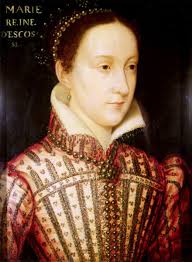 Mary Stuart
Mary Stuart
Elizabeth’s reign was long, and domestic, national, and international politics swirled around in admixtures. She flirted with men, but found having suitors secured a kind of stability, rather like Penelope and that weaving. Mary Stuart kept plotting and finally was entrapped, and went to the stump. Many others went, too. Yet no one uses Elizabeth’s name as a shorthand for murderousness. Odd that. Of course, Henry VIII oversaw the slaughter of more than 50,000 Catholics who were his subjects and his royal oath pledged him to protect and defend his subjects. Hmmm.
Francis Walsingham created MI5 and MI6 in all but name, and ferreted out plotters, and no doubt fomented some of them to justify an increased security budget.
When Calvinist rebels who attacked the Spanish in the Netherlands appealed to Elizabeth for help, she being the leading Protestant monarch in Europe, the other major one was in Sweden, Elizabeth gave just enough help to keep the Spanish tied down in the Netherlands, but never enough to bring about a decisive result. Better to have Spain tied down in the Netherlands than to have it freed from that need by a decisive Calvinist victory. Who said ‘cynical’?
There were many approaches of marriage both international and national. In light of the popular reaction to Mary Tudor’s marriage to Phillip, there was no chance of a foreign husband, but let the suitors come… In time the Virign Queen used that claim to identify herself with both the Madonna, and with England as her immaculate child. The author goes into the symbolism of this at length, the jewellery, the portraits, the gild.
But the point remains that there was no heir. That must have bothered a lot of people who could foresee a gathering of the carrion when she died. And she could have died at any time, falling down stairs, in an influenza epidemic, by tetanus from a small cut, bad water while travelling, the list goes on. Those who supported her the most, these had the most to lose if instability followed her death. They must surely have thought about this, and they must surely have taken out insurance of some kind. The author reveals nothing of this.
The one chapter where the author does dig concerns Elizabeth’s speech at Tilbury when the Spanish Armada was approaching.
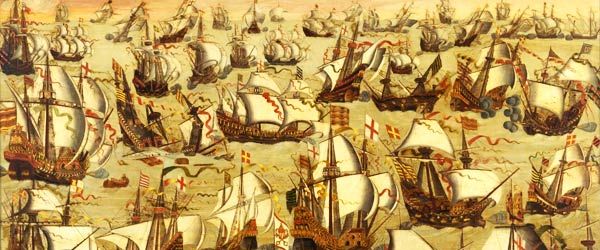 That armada.
That armada.
Hilton concludes, mostly by assertion, that Elizabeth did not give the speech widely attributed to her (See William Safire, ‘Lend me your ears’). That she went to Tilbury to consult with the admirals and generals is documented, but not that she spoke or what she said if she spoke. The author concludes the speech was retrospectively credited to her a generation later, and stuck. I do like that kind of digging, though I was disappointed at the conclusion, but it seemed to rest largely on the absence of evidence, and as Donald Rumsfeld taught us, the absence of evidence is not evidence of absence.
Oh yes, Machiavelli is mentioned several times and is shown in one of the coloured plates in this handsomely produced book. The mentions are gratuitous and superficial. Par for the course.
Lisa Hilton is a successful author with many titles to her credit. The back cover of this tome bears this blurb: ‘Game-changing…how history should be written,’ Andrew Roberts. I expect this the Roberts with a lengthy and laudatory entry in Wikipedia where he is described as a British historian and journalist, and a FRSA and FRSL, dignities so far above my station that I know not what they are. Yet I dare to dissent.
The experience of reading this book was like watching squeal televisions programs, where gangs of immature adolescents shriek and squeal at each others’ dresses, make-up, hot-rods, guns, and general vulgarity. It is my first squeal and shriek book. Much more attention is lavished on the gowns, the regalia, the jewels, than on the forces in play that lead to the events at which the gowns are worn. It might also be compared to one of those celebrity magazines I pass by at supermarket tills, combining glitz and gossip a mile wide and an inch deep.
The book starts in the middle; is breathless throughout; opinionated without being informative. It makes no concessions to the reader’s desire for an orderly exposition of the facts of Elizabeth’s life. Instead it replicates the kaleidoscope of the times in blizzards of name-dropping, as if all readers already know all of this and are waiting for the writer to tell us what to think. She does tell us often with that dreadful adverbs: obviously, reasonably, rightly, finally.
I made my own chart of the principal characters so I could follow, to some degree, our breathless correspondent as she darts from one subject to another, seldom leaving a transition, internal summary, or any other signpost behind. What would Jacques Barzun say about this? Probably not that it is how history should be written.
That there is contention over facts or interpretations is taken as license by this writer, not as a matter that requires careful adjudication. There is little evidence in the text of the impact of studying the lengthy bibliography at the back. It is rather as the script writers say: based on a true story. Sometimes passages in quotation marks have a footnote and sometimes they do not. The footnotes are often to whole books, and not to passages, page, or specific points.
 Lisa Hilton
Lisa Hilton
‘What he was accused of compassing was the possession of two Tudors, the king as his charge and Elizabeth as his wife.’ Huh? ‘Compassing’? It has an archaic meaning as ‘contriving’ but really, how many 21st Century readers will get it? I did not. This is one example of many instances where odd words, usually long, are used. All those students I have read who thought big word was a big idea, they came to mind.
Elektra/Orestes at the Belvoir
A one hour summation of the blood bath in the house of Atreus.
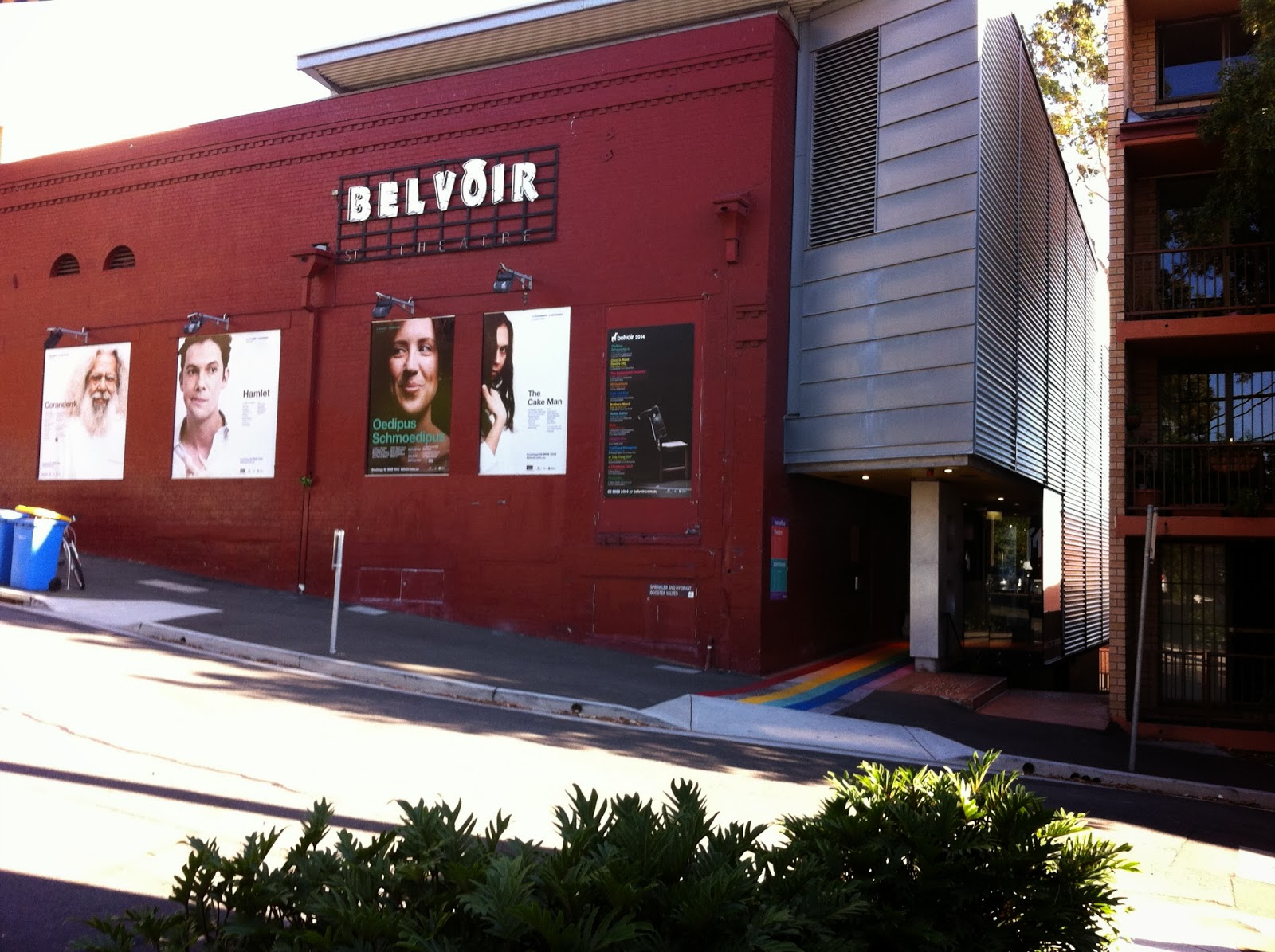
Brilliantly staged with a committed cast it takes many liberties with Euripides and updates it to the IKEA age.

This Elektra is a petulant, overgrown teenager who sulks and makes a great deal of noise. There is in her no sense of impending doom or menace. She has spent eight years not growing up and seems bound to go on that way indefinitely. Though Elektra had to carry the emotional core from the get-go.
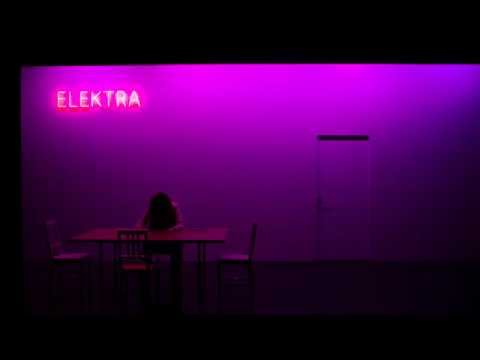
The intensity in the original is lost here in a blizzard of the F word. Nor did any of the famous lines from the original make the transition.
Vengeance in this rendering is reduced to filial love, but in any of the Greek versions there is far more at stake than that. Since the murder of Agamemnon the land has been cursed, no rain, goats born with two hears…. The natives are indeed restless, believing the gods have condemned the land and all who there dwell because of the murder of the king. The gods must be satisfied, yet the only way to satisfy the gods is with another unrighteous murder, that of Clytemnestra and her paramour. Indeed in the Greek versions, while the deed is done, it does not atone, for that Elektra and Orestes have to leave…. pursued by the Furies, but in so doing they draw the curse off the land. If tragedy has no-winner, then this is tragedy.
These quibbles aside, it was compelling and the overall theme of the story remains.
I particularly liked the insouciant Aegisthus with his worn bathrobe. Just right. Though it took him a long time to die and it began to seem as though Orestes was counting the stabs to reach a set number. I suppose the number of blows was intended to look like a frenzied attack but it did not; rather it looked methodical, and pointless.
But the overall staging was memorable, go see it for yourself to see why.
Raymond Chandler, ‘The Lady in the Lake’ (1943)
I came across Jacques Barzun’s ‘Catalogue of Crime’ (1989) and spent several evenings flipping through it, reading the 50-100 word reviews, each a model of composition, trenchant, clear, and definitive. I searched for reviews praising unfamiliar writers to broaden my horizons, but also came across golden oldies like Raymond Chandler. Of Chandler’s ‘The Lady in the Lake,’ Barzun wrote…..
‘The exposition of the situation and character is done with remarkable pace and skill, even for Chandler. This superb tale moves through a maze of puzzles and disclosures to its perfect conclusion. Marlowe makes a greater use of physical clues and ratiocination in this exploit than in any other. It is Chandler’s masterpiece.’
High praise indeed, the more so considering the source. If you don’t know Jack, it is time you did. Try Wikipedia for a start.
After reading the ‘Black-Eyed Blonde,’ reviewed elsewhere on this blog, I recalled this praise and decided to re-new acquaintance with it. I tried to find it as an audio book while travelling, but that did not work out, and that, too, is explained in another post. When I got back to the Ack-Comedy, while shelving the 18 kilograms of travel reading I came across the very book: ‘The Lady in the Lake’ in a 1971 printing from Canada which I must have purchased for .95 cents in graduate school penury. The back cover is long gone and the front cover is torn, but all the pages are still there with all the words.

Wow! What a trip. What an arrival. I was pretty sure I remembered the plot, and who done it, but even so there were twists and turns that surprised me. In fact, at one point toward the end I began to doubt my recollection. It did not seem to be developing as I remembered…. But then it did, after another turn and twist or two.
And what a cast of characters: Almore, the needle doctor; the icy Miss Fromsett; laconic Jim Patton who saves Marlowe’s bacon; Lavary, the oily lady’s man one time too many; huffing and puffing Kingsley; and Lieutenant Degarmo, who, in the end, was a cop; demoralized Captain Webber; malevolent Mildred; the hollowed out Graysons; the illusive Mrs Fallbrook; Bill Chess, the crippled war veteran; and more.
The strength of this title is that cast of characters. As in a Frank Capra movie, all the supporting actors are given their due. Each gets camera time; none is reduced to plot device, not even the very dim Bay City patrolmen. No two sound alike. The voices are all distinct. Although there are descriptive passages, they are largely just that without the sardonic metaphors, similes, and comparisons that Chandler could do like no one else.
I stress that ‘no two sounded alike’ because in more than one krimie an ostensibly diverse set of characters all use the same speech mannerisms, idioms, and syntax. When this happens the characters blend and I suspect that the author is unaware that these are distinctive mannerisms, idioms, and syntax. I refrain from mentioning the names of offenders. It is on par with those very tired clichės about ‘climbing’ into bed. The last bed I climbed into was a upper bunk bed on a sleepover as a child. No bed since then has needed climbing either into or out of. Yes, this is another pet peeve.
 There is a 1947 film, starring Robert Montgomery as Marlowe. It takes far too many liberties with the novel, but evidently with Chandler’s approval.
There is a 1947 film, starring Robert Montgomery as Marlowe. It takes far too many liberties with the novel, but evidently with Chandler’s approval.
Back to the ‘The Lady in the Lake,’ I have to admit that there were some dead spots. The most significant is the motivation of Mildred in the first murder of Mrs. Florence Almore. I never did quite get that. Moreover, it made no sense to me that Talley was there at the time to steal the shoe. But once done that set the ball rolling. There were a few passages that fell flat and some references that went over my head, e.g., ‘cheese glasses’ (p. 30), as in drinking glasses; ‘This is dum if I know whether I could or not’ (p.61); ‘those moustaches that get stuck under your fingernail’ (p. 187); and, the decor was ‘ashes of roses’ (p. 192). What colour is that? Cheese glasses? A moustache under a fingernail? Dum? You lost me, Ray.
Benjamin Black, ‘The Black-eyed Blonde’ (2014)
Good Reads meta-data is 304 pages, rated 3.51 by 3,483 litizens.
Genre: Krimi: Species: Sunshine Noir.
Verdict: Brilliant, in a word. * * * * More, please!
Never thought I would say that a Chandler imitator bettered the master, but here it is. This is Philip Marlowe in the California sunshine of 1947 and he is in top form! This novel might as well be a lost manuscript of Chandler’s come to light, such a ring of the master does it have.
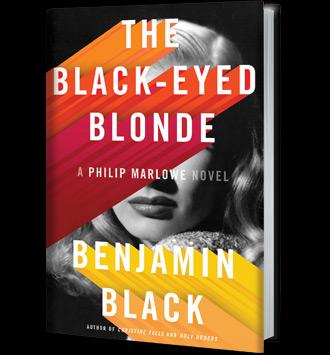
Every page crackles with sharp asides, deadpan dialogue, and show stopping imagery. Here is a sampler.
‘The telephone on the desk has the air of something that knows it is being watched.’
‘I was about to use my special deep-toned, you-can-trust-me, I’m-a-private-detective voice’ but she didn’t wait for it.
‘…there was someone else, and now I knew who it was. I’d known for some time, I suppose, but you can know something and at the same time, not know it. It’s one of the things that help us put up with our lot life…’
‘That’s a possibility I’d rather not have entertained. But once you think a thing, it stays thought.’
He had such an easy charm ‘you’d find yourself inquiring if he was all right and saying you hoped he hadn’t strained his wrist by having to keep that heavy-looking gun trained on you…’
‘The mist clung to my face like a wet scarf.’
‘My eyes felt like they had been lightly roasted in front of an open fire.’
‘I saw him walking down the street the other day and he didn’t look dead at all.’
‘I’m the hired help, but you’re talking to me like someone you’ve known all your life, or someone you’d like to know for the rest it. What gives?’
‘I stand at the window a lot contemplating the world and its ways.’
‘I don’t know your name,’ I said. ‘No you don’t…do you,’ she replied.
‘I was thinking about this and that, this being Clare Cavendish, and that being Clare Cavendish too.’
‘Of course I’d come. I would have gone to her if she had been calling from the dark side of the moon.’ [Amen!]
In context, each of these passages hits the mark! Marlowe smokes too much, drinks too much, pays too little attention to money, and hangs on like a bulldog. It just does not add up, so he keeps going until it does, add up.
The ride includes a coshing or two, a pistol whipping, rape, torture, four murders, and a suicide. Though most of the mayhem occurs off camera, Midsomer’s got nothing on this body count.
The femme fatale is very femme and very fatale, spy beautiful, as Chandler wrote of another of her kind. But also, at times, blushing and shy. Marlowe has a hard time squaring that circle. At the end, so does the reader.
Her mother steals the show at one point, she a self-made woman in the perfume business and mother of this Aphrodite is not at all what Marlowe expected when summoned. No airs, no graces, no manners, and no nonsense!
Though Marlowe is unaccountably slow witted about finding the missing man’s sister. In fact she finds him. He asked doormen, gardeners, and drivers about the missing man but not the sister. Go figure. Maybe it is a ploy; play hard to get she’ll come to you.
The gimlet was a give away to the cognoscenti.
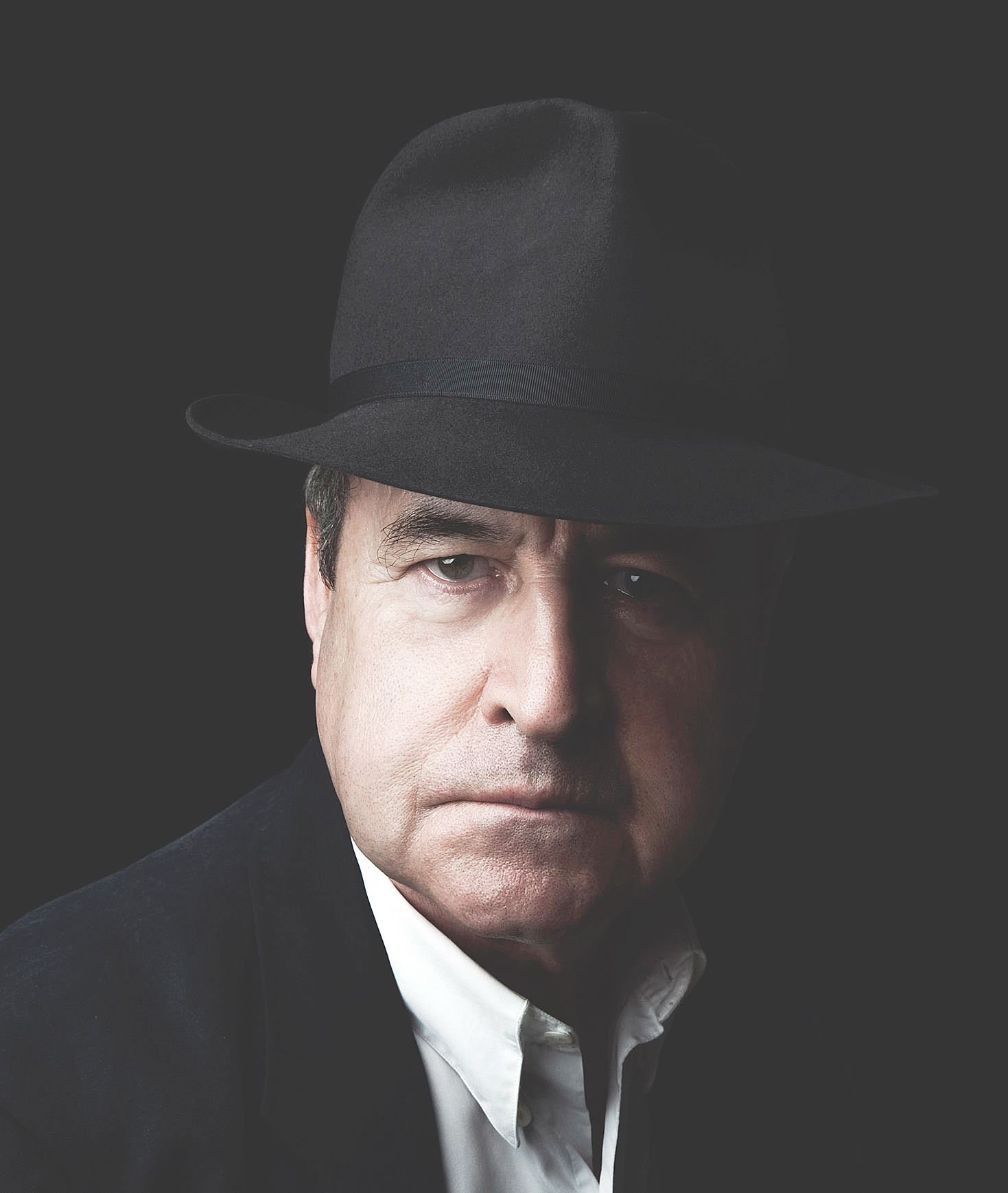 Benjamin Black (John Banville)
Benjamin Black (John Banville)
Not at all sure why anything would be called Liberace in 1947. The man took that name in 1950 and was by no means well known at the time. The casual reference to a Rolex watch jarred in 1947, long before it became a status symbol for the idle rich. Marlowe is surprisingly incurious about the femme fatale’s brother. Ditto a reference to Air Canada flying direct LA to Toronto, Wikipedia says Trans-Canada Airlines took the name Air Canada only in 1965. That part was easy to check. More than 2,000 miles for a 1947 aircraft. OK the date is not specified.
By the way that title has been used before with a different meaning.
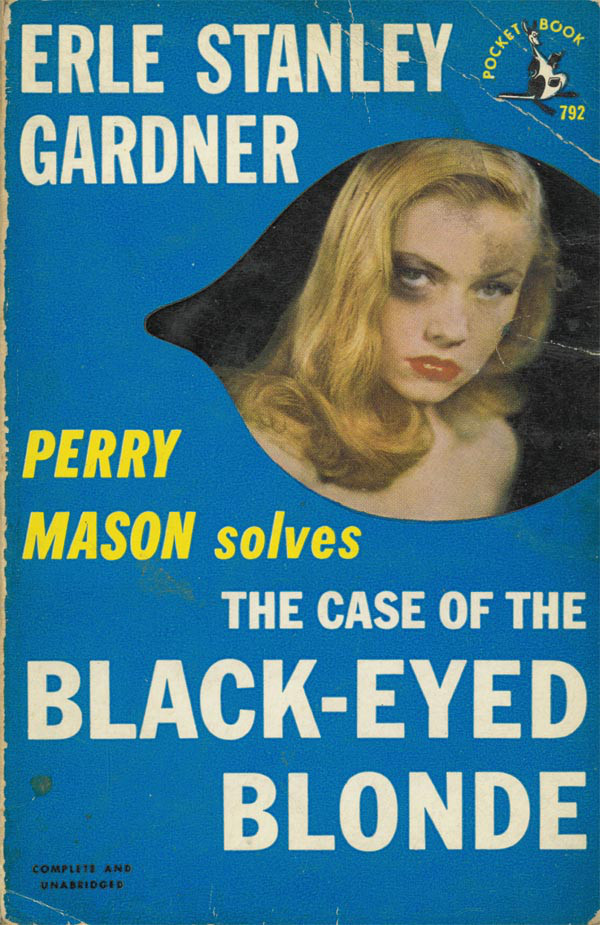
L.R. Wright, ‘The Suspect’ (1985)
A Canadian krimie from the Sunshine coast of British Columbia on the eastern shore of the Strait of Georgia and just northwest of Vancouver, though populous and favoured by tourists, it can only be reached by ferry. Ergo it is somewhat remote.
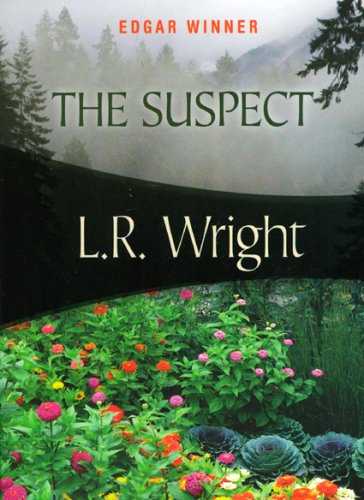
Because of the mild climate, it is also favoured by retirees. In this story two brothers-in-law figure, both in their 80s. After a lifetime of putting up with each other, one kills the other. Ah, all those family Thanksgivings and Christmases are enough to drive anyone to extremes. Though here the palette is darker still. The deed is done.
The perpetrator prepares to face the police, but when the Mounties come to get their man, they ignore this frail old man in favour of suspicious types who may have been seen around. That is a nice set up. Once he has been passed over, the perpetrator decides to let it be. He does not blurt out the confession he had rehearsed but goes coy and vague. That of course, in time, makes the Mountie, Karl Alberg, who sticks with the case, suspicious.
Alberg finds the time to romance the local librarian, Cassandra, but neither of them seems very good at romance. The villain is a library user and their paths cross.
Along the way we find out more about the Mountie, who never wears the uniform, and the librarian, and Gibsons, the town. There is much gardening, I suppose because it rains so much there, as in Rain City, Vancouver.
I am not whether this is part of series. Nothing is said on the cover.
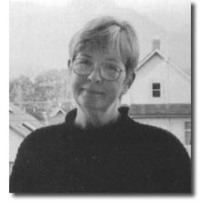 L. R. Wright
L. R. Wright
L.R. Wright has a number of titles, and perhaps I will try another.
Julian Barnes, ‘The Porcupine’ (1992)
The novel offers an account post-Communist show trial in the heart of darkest Eastern Europe told as a test of wills between the defendant, the 35-year dictator, and the prosecutor, a professor of law, who got the assignment because no one else wanted it; too many skeletons in that closest. They spar in interviews and also in the courtroom.

During the tumult of the Change, when the Red regime fell, most records were destroyed and few records were kept in the first place. Should evidence of the dictator’s undoubted crimes be fabricated, or will the new regime settle for convictions for pilfering office supplies? Enter Fox News which I am sure could puff up a few office supplies to an unprecedented national disgrace with its distinctive combination of hysteria and ignorance.
I gave the game away when I referred to this as a ‘show trial’ for while the new regime wants to break with the past, needs must. The prosecutor has a crisis of conscience. True believers remain and perhaps the old regime will return.
The deposed tyrant is no fool and he gives as good as he gets in his confrontations both in interviews and in court. A decisive result is necessary.
It all becomes didactic. Argument and counter argument, and not much recognisable human feeling in any of it. There is a kind of utopian element in the ambition to create society anew, to build a new and better society, but it is not developed in this short book.
 Julian Barnes
Julian Barnes
I read It in 1993 but retained no memory and when I happened to see it on the shelf I tossed it in the pile to take to Hastings in 2015.
Raymond Chandler, ‘The Killer in the Rain’ an Audible Book read by Elliot Gould.
While travelling I went looking for Chandler’s ‘The Lady in the Lake’ on Audible to test Jacques Barzun contention that it is the best of Chandler’s many good novels, but all I could find was a cut down dramatised version. I did listen to that and it had the essence of the plot but not enough of the prose. I also noticed ‘The Killer in the Rain’ and took it, too. This was a reading not an enactment.
‘The Killer in the Rain’ is a collection of early short stories by Chandler which, in this version, includes:
‘Killer in the Rain’
‘Goldfish’
‘Finger Man’
‘The Curtain’
Having read the complete Chandler oeuvre, I have read these stories but have not thought of them for years. Time to re-new our acquaintance.
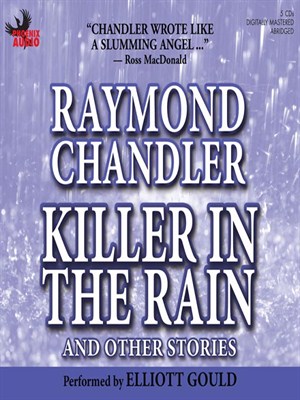
Two things emerged. First, I heard characters, incidents, events, situations that Chandler re-worked later in his novels. It was interesting to realise that good as the stories were, they were improved when he re-worked them into the novels. Though there also people and events in the stories that did not make it to the novels, some pretty arresting ones, especially those goldfish and the small woman with the big gun.
Second, Elliot Gould was all wrong for this assignment. He just does not sound like California. He lacks the laconic sunshine in his voice of, say, Dick Powell, Robert Montgomery, James Garner, or Powers Boothe, all of whom have had a turn at Marlowe. Yes, I know Humphrey Bogart was also a New Yorker but he did not sound it the way Gould does. Now perhaps it is because I know who Gould is that I say that. But while I am saying it I will add that he sounds like a New Yorker.
His diction is perfect; he does well in distinguishing the voices of all the characters, yet I quibble.
There is more, perhaps I was also distracted because I know why he got the assignment. He played Marlow in a Robert Altman film ‘The Long Goodbye’ in 1973 derived from Chandler’s novel of the same name. And that is my point, because that film was a parody of Marlowe. Its expressed purpose was to show how inept and unsuited such a figure as Marlowe was in the real word of crime and corruption.
To return to my theme. Gould’s claim to the job is that he was the anti-Marlowe. That niggled me, too. That made two strikes against it. I cringed at his New York voice and I just knew he had no sympathy for the character he was projecting. Had he any sympathy he would never have done the Altman film!
There are dozens of alternatives to listen to on my iPhone but I stuck out ‘The Killer in the Rain’ to the end. Why? Chandler’s prose.
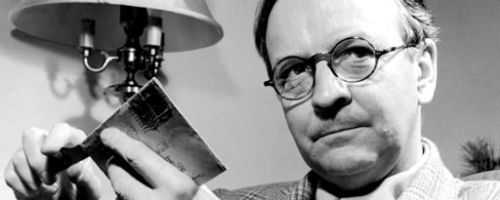 Raymond Chandler
Raymond Chandler
That man could turn a phrase, spin a metaphor, bite off a line, all in the warm California sunshine he could present a very dark, very black world.
The bad news is that Gould is the reader for most of the Chandler titles on Audible.
I discovered Audible Books with my first smartphone, a Samsung, and liked the idea. At that time I walked the honourable dog several mornings a week and sometimes in the afternoon, too. Kate and I were both working and we took turns. When on dog walking duty I listened to talking books.
I was familiar with talking books on CDs and had listened to many on drives in the States, including much Marcel Proust. Those titles were all books that had been produced for voice. With Audible I also discovered books that were only Voice Books, just as there are books that are only Electronic books, v-books and e-books. The first v-book I heard was a freebie from Audible, that must have been the business model to lure in customers, about letters to Sherlock Holmes’s address. It was a nice idea for a set up. I joined Audible and continue to subscribe.
